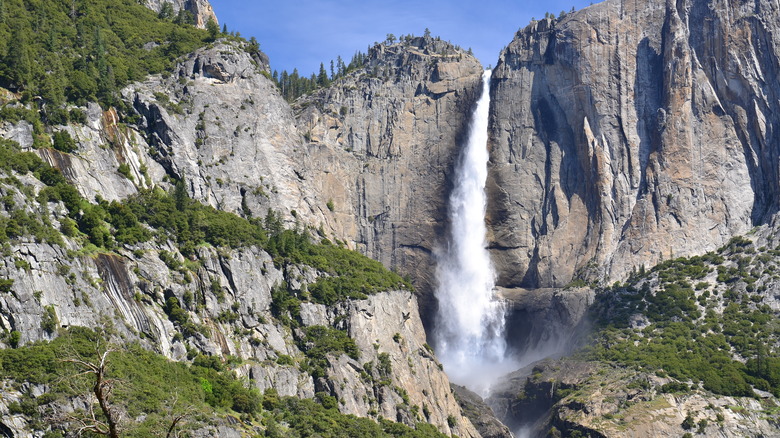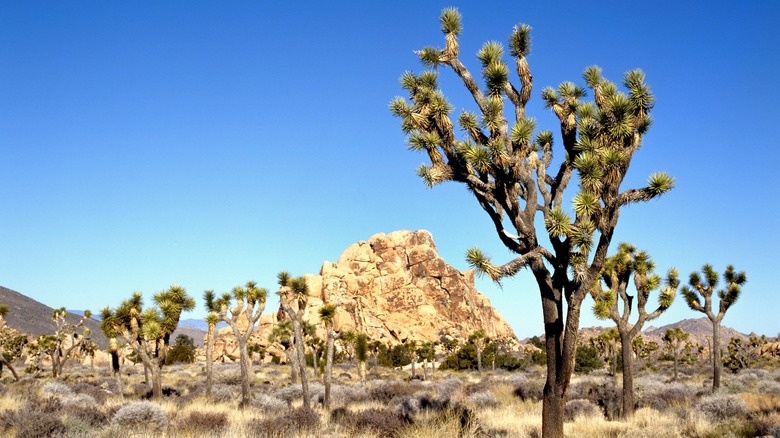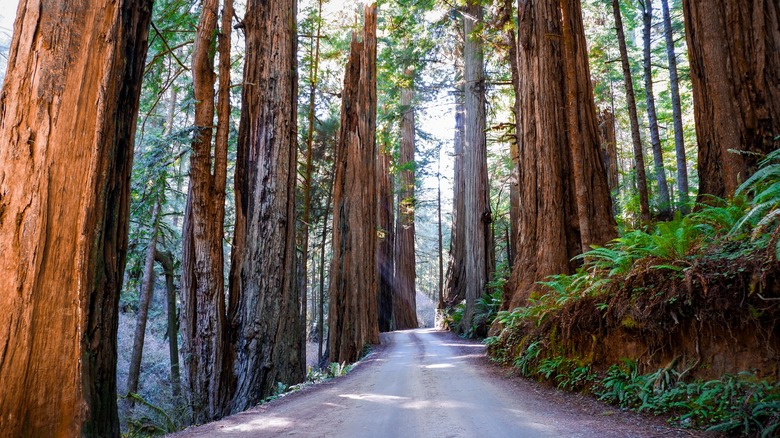California holds nine national parks, the most of any state and one-seventh of the 63 total parks in the U.S. From towering redwoods and volcanic vents to misty waterfalls and deserts dotted with cacti, the state is home to a diverse array of ecosystems. These rich landscapes go beyond the state’s two most-frequented national parks, Yosemite and Joshua Tree, which also ranked among the country’s 10 most-visited parks in 2022. They even go beyond the mainland since Channel Islands National Park is just off the coast.
While it might seem like a lot to take in all at once, there is a winding road trip route where you can hit up all nine of California’s national parks in about 31 hours of driving time. It will probably work best if you can break it up with hotel or camping stays over two weeks or more. Arm yourself with an $80 U.S. Park Pass so you’re not having to pay a separate entrance fee for each park. Though long, the journey could well be the trip of a lifetime as it covers some 1,700 miles and shows off the full range of natural beauty in the Golden State.
In the movie “Return of the Jedi,” California represented two completely different worlds, a forest moon and a desert planet, the latter of which was filmed in a stunning sand dune field. You can see the forest moon part in Northern California, where this road trip begins with Redwood National and State Parks.
From redwoods to volcanoes and waterfalls

The tallest trees in the world stand in Redwood National and State Parks, including Jedediah Smith, Del Norte Coast, and Prairie Creek Redwoods. They all accept the U.S. Park Pass (a.k.a. the America the Beautiful National Parks and Federal Recreational Lands Pass). There’s a fee if you want to camp, but Redwood National Park itself is free to enter, and you can drive straight through it on Highway 101.
Veering off onto State Route 299 near the city of Arcata should provide the quickest way (just over 4 hours) to your next destination, Lassen Volcanic National Park. Here, you can hike the world’s biggest plug dome volcano, Lassen Peak, along with the steaming hydrothermal area, Bumpass Hell, and the trails around other creatively named natural features like Boiling Springs Lake. Note that, from November to May, you can only venture one mile past the park’s southwest entrance by car, as the rest of the highway running through it, SR 89, is closed for the winter.
From there, it’s another 335 miles to Yosemite National Park via I-5. In Yosemite, you can see the majestic rock formation, El Capitan, from the road, or park and take a trail up to beautiful waterfall views along the picturesque Mist Trail. A combination of several state roads leads back out westward around 175 miles to Pinnacles National Park, where more impressive volcanic ruins and rock formations that are millions of years old await you.
Sequoias, deserts, Joshua trees, and coastal islands

Two of California’s national parks, Sequoia and Kings Canyon, are under the same administration and relatively close to each other. It’s about a 185-mile drive from Pinnacles to the Ash Mountain entrance of Sequoia, the second national park established in the U.S. (after Yellowstone). Along the way, you’ll hit the halfway point in your road trip between the cities of Coalinga and Lemoore in Central California.
Your reward in Sequoia National Park will be the sight of General Sherman, the biggest tree on Earth in terms of volume. En route to Kings Canyon National Park, which has its own giant sequoia named General Grant, you can also drive through Sequoia’s fallen Tunnel Log on Crescent Meadow Road. Enjoy the shade of these trees while you can because you’re headed to Death Valley National Park next. It’s the hottest place on the planet, and you’ll want to have a good supply of water if you’re there in the summer. The park also contains the salt flats of Badwater Basin, North America’s lowest elevated point.
The desert landscape shifts to include more gnarled yucca plants in Joshua Tree National Park. Here, you can go bouldering and visit landmarks like Skull Rock. The final 200 miles of your journey will take you from Joshua Tree to Ventura Harbor on the coast of Southern California. Park the car, stretch your legs, and take the concessionaire boat to experience the peaceful, untouched splendor of Channel Islands National Park.

